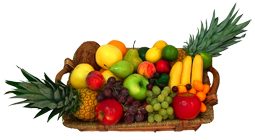 by TCRN Staff
by TCRN Staff
Perhaps you have never heard of fruits like güiscoyol the olozapo, the Rukan, black sapote, the borojó or ocarí.
All grow in Costa Rica and were part of the diet of the ancestors of Ticos, but today they are some of the “forgotten fruit” foods that are now consumed very little.
With this oversight, the Costa Rican diet lost valuable nutrients, according to a study by the Pharmaceutical Research Institute (INIF) and the National Center for Food Science and Technology (CITA), both from the University of Costa Rica (UCR).
The investigation, led by microbiologist Gustavo Rojas, seek to revitalize these foods for Ticos to consume again and thus, to regain lost nutrients.
According to experts, the rapid pace of life and lack of practice contributed these fruits lack of consumption.
“On one hand, people stopped planting many of these fruits, and secondly, the lack of custom made people stop eating. The same climate change causes the crop yields to decrease, and the fruits do not grow well, “said Luis Poveda, one of the researchers.
These fruits are high in antioxidants (ingredients that help eliminate free radicals, oxygen atoms that can cause arthritis, hypertension, cancer, premature aging and Alzheimer’s).
Neglecting these fruits also led to Costa Ricans losing lots of fiber, essential for protection against disease.
According to experts of the UCR, in the country there are about 40 forgotten fruits .
The researchers began their analysis with 13 of them and warned that few currently consumed foods now in the tica diet have similar levels of the nutrients in these fruits.
One is güiscoyol (Bactris guineensis), native of Guanacaste. This is the most powerful antioxidant fruit known, and is even greater than the Costa Rican blackberry (Rubus adenotrichum).
The olozapo (Couepia polyandra), also in Guanacaste, is another “superfruit”. Its fiber is much higher than beans, peas, chickpeas and lentils.
The Rukan (Flacourtia rukam), has lots of vitamin C and antioxidant value is very high.
The borojó (Borojoa patinoi) has fiber content similar to the olozapo, so it is a source for strengthening bones and protecting against disease.
The black sapote (Diospyros digyna), the Jorco (Garcinia intermedia) and the tree tomato (Cyphomandra betacea) promote digestion and increase the immune system.
The analysis includes fruit still known as Brazilian cherry and the ICAC, but no longer consumed frequently. The latter is a source of energy and vitamin C.
With this data, researchers face a new project: to rescue these fruits and boost its production so that Ticos eat them again and regain their lost nutrients.
